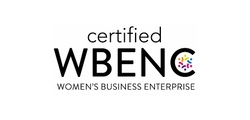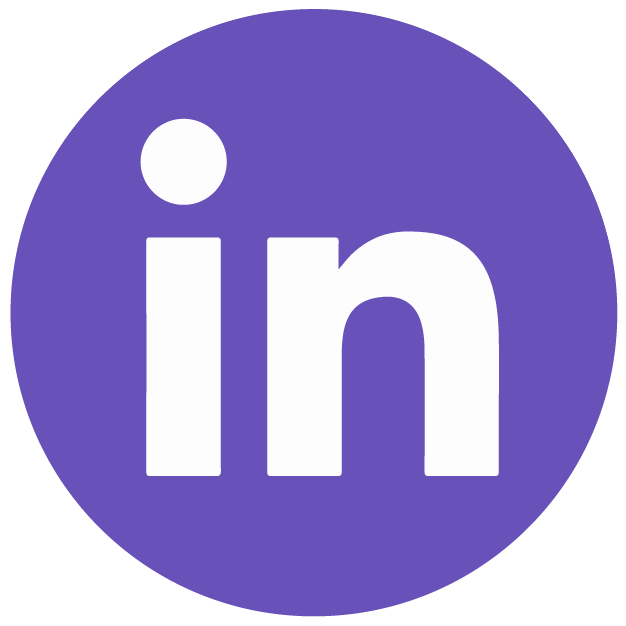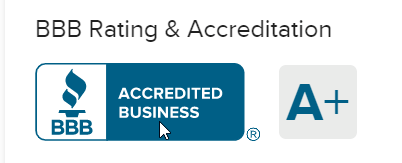GRATITUDESgroup is a consulting firm focused on driving positive change in organizations and communities. We are passionate about helping our clients reach their goals, whether it’s improving performance, developing people, or creating solutions for talent optimization and increasing employee retention. Our team of experts brings decades of experience in a variety of industries, from human resources to business strategy and beyond. Not only do we provide professional services, but we also strive to create an inspiring environment for our clients and partners.
CONTENTS
- Introduction to Talent Optimization
- Signs Your Company Could Benefit from Talent Optimization
- The Key Components of Talent Optimization
- How to Create Core Values for Your Organization
- How to Present Your Core Values
- What Millenials and Gen Z Want in the Workplace
- How to Build Community at Work
- The Benefits of Intergenerational Workforces
- Key Components of a Great Work Community
In the dynamic and fast-changing world of business today, companies are continuously exploring avenues to excel and gain a competitive advantage. Amidst the various strategies and technologies available, one particularly impactful method stands out – talent optimization. Far from being a buzzword, this transformative process is a strategic necessity that has the potential to propel businesses to unprecedented heights. The best part? It all starts by working within your existing team.
Introduction to Talent Optimization
Talent optimization can be described as the skillful process of maximizing the capabilities of a company’s workforce. It encompasses a comprehensive strategy that harmonizes individuals, objectives, and business targets to establish a nurturing atmosphere that empowers employees to thrive. Talent optimization transcends conventional human resources methods by increasing employee engagement, skill development, and the cultivation of a purpose-driven culture.
Signs Your Company Could Benefit from Talent Optimization
Recognizing signs that a company could benefit from talent optimization is crucial for enhancing its overall performance and success. One evident indicator is a decline in employee engagement and morale, leading to reduced productivity and increased turnover. Additionally, if the organization is struggling to meet its business goals or experiencing a lack of alignment between the workforce and the company’s strategic objectives, talent optimization becomes imperative. Another telltale sign is a skills gap within the workforce, hindering the company’s ability to adapt to evolving industry demands. Moreover, if the company is unable to attract or retain top talent, it indicates a need for talent optimization to create a compelling and purpose-driven work environment. Ultimately, any organization facing challenges in unleashing the full potential of its workforce should seriously consider implementing talent optimization strategies to unlock untapped capabilities and achieve sustainable growth.
Key Components of Talent Optimization
Talent optimization encompasses several vital components that collectively maximize the potential of an organization’s workforce. The first crucial element is talent acquisition and recruitment. This involves identifying suitable candidates with the skills, experience, and cultural fit to excel within the company. An effective recruitment process ensures that the organization attracts top talent and builds a strong foundation for future success. The second vital component is talent development and training. Investing in employee growth and skill enhancement not only fosters a highly skilled workforce but also boosts employee engagement and loyalty. Providing opportunities for learning and development empowers employees to stay relevant in their roles and encourages them to contribute meaningfully to the company’s objectives.
Another essential aspect of talent optimization is performance management. This involves setting clear goals, providing regular feedback, and evaluating employee performance objectively. A well-defined performance management system helps identify areas for improvement and recognizes high performers, thus motivating employees to excel. Additionally, talent optimization emphasizes employee engagement and satisfaction. Creating a positive work environment where employees feel valued and supported nurtures a sense of purpose and commitment, leading to increased productivity and reduced turnover. By aligning people, strategy, and business goals, talent optimization creates a cohesive and thriving organization that drives long-term success and competitive advantage.
How to Create Core Values for Your Organization
Creating core values for an organization is a thoughtful and collaborative process that lays the foundation for its culture and guiding principles. To begin, it is essential to involve key stakeholders, including employees, leaders, and even customers, to gather diverse perspectives and insights. Engaging in open discussions and brainstorming sessions allows for the identification of shared beliefs and principles that define the organization’s identity and aspirations. Once potential core values are identified, they should be refined to ensure they are concise, memorable, actionable, and reflect the company’s mission and vision. Transparency and authenticity are paramount during this process to ensure that the core values resonate with both internal and external stakeholders.
Additionally, the core values should be aligned with the organization’s long-term objectives and be aspirational yet achievable. They should act as guiding beacons for decision-making, employee behavior, and overall company culture. To solidify the core values, leaders must lead by example, embodying the values in their actions and communications. Integrating the core values into various aspects of the organization, such as hiring, performance evaluations, and recognition programs, reinforces their significance and encourages employees to embrace them. Regular communication about the core values and their real-world applications helps to embed them into the organizational DNA, creating a shared sense of purpose and unity among all members of the organization.
How to Present Your Core Values
Presenting core values for an organization requires a thoughtful and strategic approach to effectively communicate the guiding principles and beliefs that define its culture. Firstly, it is essential to articulate the core values clearly and concisely. Each value should be expressed in simple language, making it easy for employees and stakeholders to understand and remember. Utilizing real-life examples and stories that exemplify these values in action can help bring them to life and make them relatable.
Secondly, incorporating the core values into the organization’s mission and vision statements reinforces their significance and demonstrates their alignment with the overall objectives. Displaying the core values prominently on the company’s website, in internal communications, and within the physical workspace reinforces their importance to the organization’s identity.
Furthermore, leaders within the organization must lead by example and embody the core values in their daily actions and decisions. This sends a powerful message to employees, encouraging them to embrace and apply these values in their work. Regularly recognizing and celebrating employees who exemplify the core values also reinforces their importance and creates a positive culture that encourages adherence to these principles.
Finally, engaging employees in discussions about the core values and how they relate to their roles and responsibilities can foster a sense of ownership and commitment. Seeking feedback from employees and stakeholders about the core values and their impact on the organization’s culture allows for continuous improvement and refinement of these essential guiding principles. By thoughtfully presenting and reinforcing core values, an organization can establish a strong, cohesive culture that drives success and inspires collective purpose.
What Millenials and Gen Z Want in the Workplace
Millennials and Gen Z, the newer generations entering the workforce, have distinct preferences and expectations when it comes to their workplace environment. One of the primary factors they seek is a strong work-life balance. These generations value flexible work arrangements that allow them to manage personal commitments and pursue passions outside of work. They also prioritize a collaborative and inclusive work culture, where their opinions are respected, and they can contribute meaningfully to the organization’s mission. In addition to competitive salaries, Millennials and Gen Z place high importance on professional development opportunities. They seek continuous learning, mentorship programs, and career growth prospects to advance their skills and stay relevant in a rapidly evolving job market. Moreover, these tech-savvy generations are drawn to workplaces that embrace innovative technologies, digital tools, and modern communication methods. Companies that foster diversity, sustainability, and social responsibility also resonate with their values, as they actively seek workplaces aligned with their ethical and societal concerns.
How to Build Community at Work
Building a solid sense of community at work is essential for fostering a positive and cohesive workplace culture. Firstly, promoting open communication and collaboration is key. Encouraging employees to share ideas, feedback, and insights creates a supportive environment where everyone’s voice is valued. Team-building activities and events, both within and outside the office, can also play a significant role in community building. These activities provide opportunities for employees to connect on a personal level, fostering friendships and camaraderie. Recognizing and celebrating individual and team achievements further strengthens the sense of community, making employees feel acknowledged and appreciated. Additionally, creating mentorship or buddy programs allows new employees to integrate more smoothly and builds a network of support within the organization. Overall, investing in community-building initiatives helps create a workplace where employees feel connected, motivated, and engaged, ultimately leading to increased collaboration, productivity, and overall job satisfaction.
The Benefits of Intergenerational Workforces
Embracing intergenerational workforces, consisting of employees from different age groups such as Baby Boomers, Gen X, Millennials, and Gen Z, offers numerous benefits for organizations. Firstly, the diverse perspectives and experiences of employees from different generations foster creativity and innovation. Each age group brings unique skills and knowledge, leading to a dynamic exchange of ideas that can drive the company’s success. Secondly, intergenerational workforces promote knowledge sharing and mentorship. Seasoned veterans can pass down valuable expertise to younger colleagues, while younger employees can offer fresh insights and technological proficiency to their older counterparts. This exchange of knowledge enhances the overall skill set of the workforce and promotes a culture of continuous learning. Moreover, a multigenerational workforce fosters a harmonious work environment, promoting mutual understanding and respect among employees of different ages. This diversity and inclusion can lead to higher employee satisfaction and engagement, contributing to improved teamwork and productivity. Ultimately, organizations that embrace intergenerational workforces gain a competitive advantage by leveraging the full potential of their diverse talent pool and adaptability to the evolving needs of the market.
The Key Components of a Great Work Community
A great work community is built upon several key components that foster a positive and inclusive environment. Firstly, open and transparent communication is essential, as it encourages collaboration, understanding, and a sense of belonging among employees. A culture of trust and mutual respect allows individuals to freely express their ideas, concerns, and feedback. Secondly, strong leadership plays a pivotal role in shaping the work community. Effective leaders lead by example, inspire others, and actively promote teamwork and camaraderie. They prioritize employee well-being and growth, recognizing that a thriving workforce is the backbone of a successful organization. Additionally, a shared sense of purpose and values unites employees around a common goal, driving motivation and commitment to the company’s mission. Lastly, a great work community promotes diversity and inclusion, valuing the unique perspectives and backgrounds of its members, thus cultivating an enriching and innovative environment where everyone can flourish.
To learn more about partnering with GRATITUDESgroup, contact us today.








